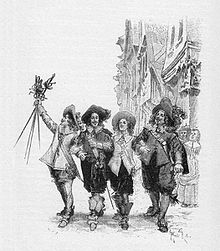If you are building a career in comics, you’re going to have to deal with a lot of different types of contracts. They may be work-for-hire agreements (See What Is Work-for-Hire Agreements), collaboration agreements (See What Is a Collaboration Agreement?), licensing deals, shopping deals, merchandise deals, and a lot of other things in between. Every deal is going to be different and the way you approach any specific deal will be based on your leverage, the size of the deal, and several distinctive factors, but if you understand the basics of what a good deal looks like, it will be much easier for you to negotiate the good contracts and reject the bad ones.
I have been a comic book lawyer since 1996 (See What Is Comic Book Law?). I have been an educator and business consultant to comic creators since 2012 (See Bio). Over the past twelve years, I’ve made myself available to answer questions from writers, artists, and publishers about everything from copyright to marketing to licensing to AI. The one important question that comes up over and over again is a variation of “How do I identify good and bad contracts?”
I’ve developed and refined my answer to this question over the past twenty-eight years. Basically, a good contract has a beneficial contractual balance. A bad contract has a detrimental contractual balance.
What Is Contractual Balance?
When I use the term contractual balance, I’m talking about the relative weight between four basic factors in an agreement, relationship, rights, revenue, and responsibilities:
Relationship is the connection between the people involved in the deal. For example, in a work-for-hire deal, someone is ordering and paying for the work (the client) and someone doing the work and getting paid for it (the talent). Understanding the relationship is important because it establishes the expectations for the rest of the deal.
Rights define who owns and controls the intellectual property associated with the deal. Copyrights and trademarks are fundamental assets in the comic book industry (See Image and Story), so any legal agreement needs to establish who has those rights, how long they have them, and what they can and can’t do with them. For example, in a t-shirt licensing deal, the side that owns the rights (the licensor) gives the side that wants to sell the t-shirts (the licensee) the right to make and sell the t-shirts under certain conditions.
Revenue explains what happens to the money generated by the deal. There are many different ways to define and generate revenue in comics (See A Simple Guide to Getting Paid in Comics) and a comic book contract needs to spell out who gets how much, when they can expect to get paid, and how can they confirm they are paid correctly. For example, in a creator-owned deal, there might be both an advance and a royalty paid to the creator if and when the comic book makes a profit.
Responsibility describes what each side in the relationship is required to do in order to exercise their rights and collect their revenue. In most cases, your responsibility will come in the form of an action (producing art, selling comics, etc.) but it can also include promises you make about the deal (See Double Indemnity: Are You Protected?) For example, in an exclusive licensing agreement (See Your Exclusive Engagement) a licensor promises not to grant the same license to more than one licensee.
How Do You Measure Contractual Balance?
Once you understand the factors that go into contractual balance, identifying a good contract becomes a matter of comparing the rights, revenue, and responsibilities in light of the relationship.
A good option purchase agreement to turn a comic book series into a film could name the comic creator as a producer (a positive relationship) and offer an above-market purchase price and back-end participation (a positive revenue stream) in exchange for the exclusive rights to the IP (a negative rights position) and delivery of the existing comic (a positive responsibility requirement).
Alternatively, a bad creator-owned deal might list the comic creator as the owner of the IP (a positive relationship), but offers you no money up-front and questionable royalties (a negative revenue result), forces you to give up all control of the IP (a negative rights position) and forces you to pay for producing the final pages (a negative responsibility position).
It is important to understand that almost no contract will give you 100% of everything in a deal. Each side has to give up something, even if that something is minimal. You also need to keep in mind that every paragraph in a contract can shift and adjust contractual balance from one side to another and the equilibrium between the factors can ebb and flow depending on time, profit, and other factors. Understanding contractual balance can help you distinguish good deals from bad ones, but it’s not a substitute for experienced contract analysis from a professional who understands how the industry works.
Have fun with your comic.
Gamal
If you enjoyed this post, consider joining Comics Connection. Comics Connection gives creators a community to elevate their comic book careers. We offer access to business and creative resources you can’t find anywhere else. For a limited time, the first month of membership is free.
PLEASE NOTE: THIS BLOG POST IS NOT A SUBSTITUTE FOR LEGAL ADVICE. IF YOU HAVE A LICENSING OR INTELLECTUAL PROPERTY ISSUE, DISCUSS IT WITH YOUR LEGAL ADVISOR OR CONTACT C3 FOR A FREE CONSULTATION.








